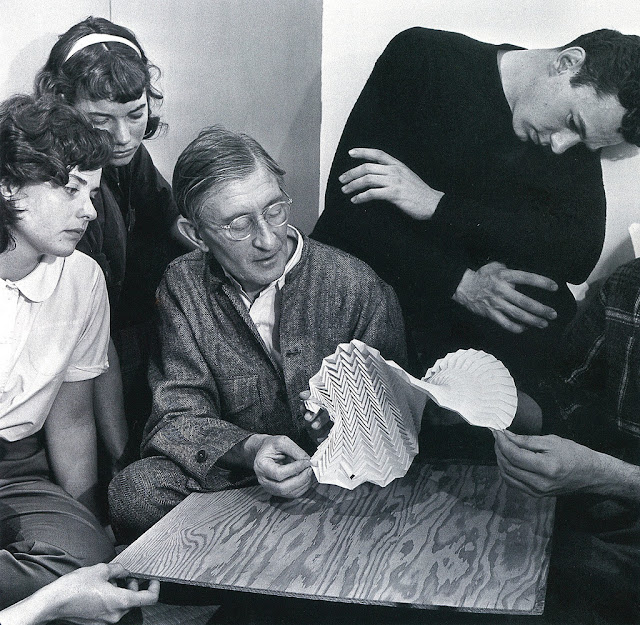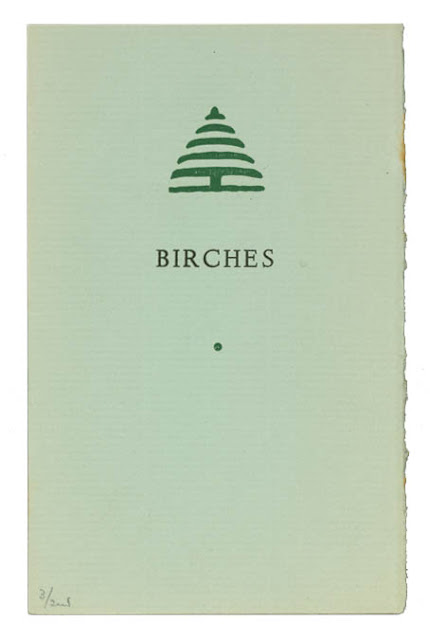Writing
Santa Barbara Independent Stories by James N. Powell

Courtesy Photo
The Powell family begins their journey westward for the author’s father’s new job at the Santa Barbara think tank TEMPO, which had a fallout shelter deep in the basement of the Balboa Building.
Unsquare Dance
Dave Brubeck, the Megadeath Intellectuals, and My Father
Thursday, December 20, 2018
In 1956 we lived in Fort Worth, Texas. Fess Parker was a neighbor and Davy Crockett, “king of the wild frontier.” One day Dad drove us out to the airfield to show us what he had been working on. Out of the hanger rolled the first B-58 Hustler, a delta-winged nuclear bomber with titanium-honeycomb wings. It was a beautiful “bird,” as Dad called it, and obsolete before the test pilot climbed aboard. After all, the Soviets had inconveniently just developed anti-aircraft missiles that could take out high-altitude bombers. Strategic Air Command was going to have to think further aloft. Dad placed in my hand a gift: a slice of wing the size of a piece of pie — and lighter than a feather. The It bird of the fleet was called “Greased Lightning.”
Dad had flown off to Europe as a kid to run bombing missions over Hitler’s troops, we imagined. For Dad was a man of few words about that war, confessing only that each time he pressed the bomb-bay button he hated it so much that he found himself hovering above his body, looking downward toward himself.
One day Dad brought home a shiny new Chevy wagon. He had landed a job on the West Coast, at a think tank. Mom and Dad loaded up the car, I pulled on my coonskin cap, my brother and little sister piled in, and after a long stretch of cactus we were in Santa Barbara.
Imagine Inventing Waves: Scott Claassen and His Ministry of Surfing and Spirit
UCSB Students Get Close to Creation on the Waves
Thursday, July 5, 2018
I first met Scott Claassen, the vicar of Saint Michael’s University Church in Isla Vista, when I was a refugee from Montecito’s San Ysidro Creek debris flow. That swollen waterway, freighted with wildfire debris, had destroyed in a heartbeat my residence of some forty years, along with my job, as well as an ecumenical chapel with a piano on which, every morning, I had developed a habit of venting my passion for Bach. So, putting first things first, I came to Scott seeking a piano.
Scott listened. He understood. And then he made it happen. After all, he used to play guitar alongside Willie Nelson and could not bear to see a fellow musician divorced from his ax.
The first thing I noticed in Scott’s office was an array of photographs hanging on the wall. Closest to his desk shone the face of Martin Luther King. Then, those of Desmond Tutu, Dorothy Day, Gabriel García Márquez, Walt Whitman, and Jacqueline du Pré. Reigning above them all, though, towered a photo of a bearded man reposing beside a stream: an iconic image of John Muir. That ranking tells you a lot about Scott Claassen’s priorities, with his concern for Earth almost utmost. Almost? Because atop his desk sit the photos of those closest to him: his wife, Maribeth Claassen, now pregnant again, and his two sons, Henry and James Muir.
Flowing
The tongue of the river--riverine linguistics--is not a building up, like the erection of a grammatical system, but a licking away, a lingo of erosion.
The Quiet Indian
American Yoga, India, and the New Orientalism
Wednesday, December 25, 2013
Sometimes I think we are all turning Indian.
Jennifer, Aluna, and a girl from Iowa who calls herself Indra, as well as myself, are getting ready for a yoga class. We tend to hunt enlightenment in packs, as if it were dangerous to meditate alone. The women are fussing over their hair and makeup. Jennifer looks stunning in bright-red Agni bracelets from Lulu Dharma, a silky looking sports bra by Jala, a mala necklace by One-O-Eight Malas, an off-shoulder blouse (strategically exposing her tantra tattoo) by Be UP, with matching pants by SoLo — all worth a few bills. Her two sister yoginis are similarly feathered and preened. As we all pile into the SUV, the girls begin quibbling about the flavor of the devotional atmosphere: Jen wants to put on Deva Premal, while Aluna insists on a chanted version of the Bhagavad Gita, often called India’s bible. Indra takes advantage of the standoff to dial in her selection: devotional songs by Krishna Das, and soon all three of these American yoginis have joined in vociferously.
His Holiness Maharishi Mahesh Yogi 1911*-2008
Thursday, March 13, 2008
The first time I met Maharishi Mahesh Yogi was in Malibu, on the beach.
It was a typical summer day in Southern California. Not much was happening. There was a south swell. From time to time a sun worshiper atop a towel would flip over, a seagull would sail off into the fog, or a large set of waves would come crashing in.
As I recall, I stood on the beach with some of my surfing buddies. We were probably dressed in the surfer’s uniform of the era: corduroy pants and white Penney’s T-shirts covered by Pendeltons, not tucked in. Unlike most surfers on most beaches that day, however, we each held in our hands a bouquet of flowers.
Suddenly cars arrived. Doors were flung open. A cameraman emerged, and next some guys in suits. A brown, sandaled foot from within the car could be seen feeling for the ground, and then-bearded and wearing a long, flowing, white dhoti-an Indian man stepped out onto the dirt road. He seemed enveloped in a nimbus of such serenity and light that, seeing him, the effect was similar to what one feels deep in a canyon before dawn, when suddenly the sun bursts over the rim.
The Snows of Hope Ranch Beach
SANTA BARBARA INDEPENDENT
May 17, 2001
by Jim Powell
When I was a kid, any truly respectable stretch of coast in Santa Barbara, any reputable expanse of sand with a good name and a suitably high opinion of itself, began to attract its own elite coterie of surf bums. Suddenly the waters off points such as Miramar, reefs such as Hammond’s, coves such as Campus, and river mouths such as Rincon found themselves a-bob with blond-haired boys astride surfboards, awaiting waves. At one secluded beach, where vast lawns and orchards aflutter with butterflies basked beside the sea, and where the waves swelled and peeled translucently over the summer sandbars, a metaphysically inclined cult of surf bums emerged. The core members of our tribe were, beside myself: Whooper, The Goose, Modoc, Chaddy, The Hog, The Ace, Stein, and The Ravin’ Baby Ese Animal Gargantua Cabron. We were brought together by a couple of simple facts. First, my big brother, The Ace, owned a woodie that ran well enough to get us all to the beach. But what was more important, was the fact that as we sat eating lunch at La Colina Junior High, we shared one deep secret—isolated by steep cliffs, miles of sand, and a guarded gate that opened only to members lay one of the most lyrical beach-breaks on the entire coast—Hope Ranch Beach.
Michael Murphy
Circumnavigations of the Soul
SANTA BARBARA INDEPENDENT
August 30, 1990
by James N. Powell
There are certain virtues, however, that ordinary mortals cannot fully embody. The peace of the saint is among them. But the peace of the saint, many of that generation felt, was what was necessary to counter the war. Thus they became actors, smiling indulgently at those still perplexed with with quotidian concerns or ontological difficulties. They thought themselves impervious to both metaphysical and material matters. In such an atmosphere the one rank that could have sated their ambitions was that of saint: the bovine placidity, the flow of white silk, the discourse on a flower.
But they could not sustain their performance; their lines were slurred, their makeup was running, blurring their vision, and they were beginning to wonder who the director was, and to what audience they were playing--other than themselves.















Comments
Post a Comment